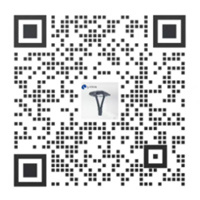 Esperanto
Esperanto
 Shqiptare
Shqiptare
 Euskara
Euskara
 Zulu
Zulu
 Latinus
Latinus
 Cymraeg
Cymraeg
 தமிழ்
தமிழ்
 Slovak
Slovak
 Slovak
Slovak
 Afrikaans
Afrikaans
Eco-Friendly Lighting Solutions: Why LED Lamps Are the Future
2025-03-15
Eco-Friendly Lighting Solutions: Why LED Lamps Are the Future
Table of Contents
- 1. Introduction to Eco-Friendly Lighting
- 2. Understanding LED Technology
- 3. Benefits of LED Lamps Over Traditional Lighting
- 4. Applications of LED Lighting
- 5. Installation and Maintenance of LED Lamps
- 6. The Cost-Effectiveness of LED Solutions
- 7. Current Trends in LED Lighting
- 8. Frequently Asked Questions
- 9. Conclusion
1. Introduction to Eco-Friendly Lighting
In a world increasingly focused on sustainability, **eco-friendly lighting solutions** are gaining momentum. Traditional incandescent bulbs consume excessive energy and contribute to environmental degradation. In contrast, **LED lamps** emerge as a superior alternative, providing efficient, long-lasting, and environmentally friendly lighting options. As consumers seek ways to reduce their carbon footprint, understanding the advantages of LED technology becomes crucial.
2. Understanding LED Technology
Light Emitting Diodes, or **LEDs**, are semiconductor devices that convert electricity into light. Unlike traditional bulbs, they do not rely on filaments or gas to produce illumination. Instead, LEDs generate light when electrons move through a semiconductor material, resulting in a more efficient process. This technology allows for a significant reduction in energy consumption, making LEDs a cornerstone of modern lighting solutions.
3. Benefits of LED Lamps Over Traditional Lighting
The transition from conventional lighting to LED lamps comes with a multitude of benefits. Below, we explore these advantages in detail.
3.1 Energy Efficiency
One of the most compelling reasons to switch to LED lamps is their **energy efficiency**. LEDs consume up to **80% less energy** than incandescent bulbs. This efficiency translates into lower electricity bills and reduced demand for energy, making them an ideal choice for environmentally conscious consumers.
3.2 Long Lifespan
LED lamps have an impressive lifespan, lasting up to **25,000 hours** or more. This longevity significantly reduces the need for replacements, which not only saves money but also lessens the environmental impact associated with manufacturing and disposing of lighting products.
3.3 Environmental Impact
The environmental benefits of LED lighting extend beyond energy savings. LEDs do not contain hazardous materials like mercury, found in compact fluorescent lamps (CFLs). Additionally, their reduced energy consumption results in lower carbon emissions, making them a greener option.
4. Applications of LED Lighting
LED lamps are incredibly versatile and can be utilized in various settings.
Residential Applications
In homes, LEDs can be used for general lighting, accent lighting, and outdoor illumination. Their ability to emit a range of colors and styles allows for personalized interior design options.
Commercial Applications
Businesses are increasingly adopting LED lighting for its energy-saving capabilities and lower maintenance costs. From retail stores to offices, LEDs enhance the ambiance while reducing operational expenses.
Industrial Applications
In industrial settings, LED lighting is vital for safety and efficiency. High-intensity LED fixtures can illuminate warehouses and manufacturing plants, providing better visibility while minimizing energy costs.
5. Installation and Maintenance of LED Lamps
Installing LED lamps is straightforward and can often be handled by homeowners or professionals. Many LED products are designed to be direct replacements for traditional bulbs, making the transition seamless.
Maintenance Requirements
LEDs require minimal maintenance due to their durability and long lifespan. Regular cleaning of fixtures will ensure optimal light output and longevity. Additionally, as technology advances, smart LED systems offer remote control capabilities, making it easier to manage lighting in any environment.
6. The Cost-Effectiveness of LED Solutions
While the initial investment in LED lighting may be higher than traditional bulbs, the long-term savings are substantial. Reduced energy bills, extended lifespan, and lower maintenance costs contribute to the overall **cost-effectiveness** of LED solutions. An analysis of total cost of ownership reveals that switching to LEDs can save homeowners and businesses significant amounts over time.
7. Current Trends in LED Lighting
As technology evolves, so do LED lighting solutions. Current trends include smart LED systems that integrate with home automation, color-changing bulbs that enhance ambiance, and energy-efficient fixtures designed for sustainability. Understanding these trends can help consumers make informed decisions about their lighting choices.
8. Frequently Asked Questions
What distinguishes LED lamps from traditional incandescent bulbs?
LED lamps are more energy-efficient, have a longer lifespan, and do not contain hazardous materials like mercury, making them a safer and more environmentally friendly choice.
Can LED lamps really save on electricity bills?
Yes, LED lamps can reduce energy consumption by up to 80%, leading to substantial savings on electricity bills over time.
Are there any disadvantages to using LED lighting?
While LED lamps may have a higher upfront cost, their long-term benefits typically outweigh this initial investment. Some consumers may also find the light quality different from traditional bulbs, although many modern LEDs offer excellent color rendering.
How do I properly dispose of LED lamps?
LED lamps can typically be disposed of in regular waste, but it's recommended to check local regulations or recycling programs for best practices.
What is the future of LED lighting technology?
The future of LED lighting technology looks promising, with advancements in smart home integration, increased energy efficiency, and innovative designs continually emerging.
9. Conclusion
In summary, LED lamps represent the future of eco-friendly lighting solutions. Their energy efficiency, long lifespan, and minimal environmental impact make them an ideal choice for consumers looking to reduce their carbon footprint. As technology continues to evolve, embracing LED lighting will not only contribute to a greener planet but will also enhance our everyday lives through better lighting solutions. Transitioning to LED lamps is not just a trend; it is a commitment to sustainability and a brighter future.
More news
2025-04-02
L-STAR will attend the Hong Kong Lighting Fair.
Time: 6th-9th, April. Booth number: 1B, B24-B26. Address: Hong Kong Convention and Exhibition Centre 1 Expo Drive, Wan Chai, Hong Kong
2024-10-17
Hong Kong Internation Lighting Fair (Autumn 2024 )
L-STAR team is waiting for you in Hong Kong(Asia World). Hong Kong Internation Lighting Fair (Autumn 2024 ) Time: Oct,29th-Nov.1st, 2024 Booth: Hall 10, E09-E11
2024-10-17
2024 Matelec-International Trade Fair
L-STAR is pleased to invite you to the coming Lighting Fair 2024, 2024 Matelec-International Trade Fair Time:5th-8th, November Booth: Hall 4, D51 IFEMA Convention Center - Feria de Madrid Feria de Madrid Avda. del Partenón, 5 28042 Madrid España This event will show new products.





